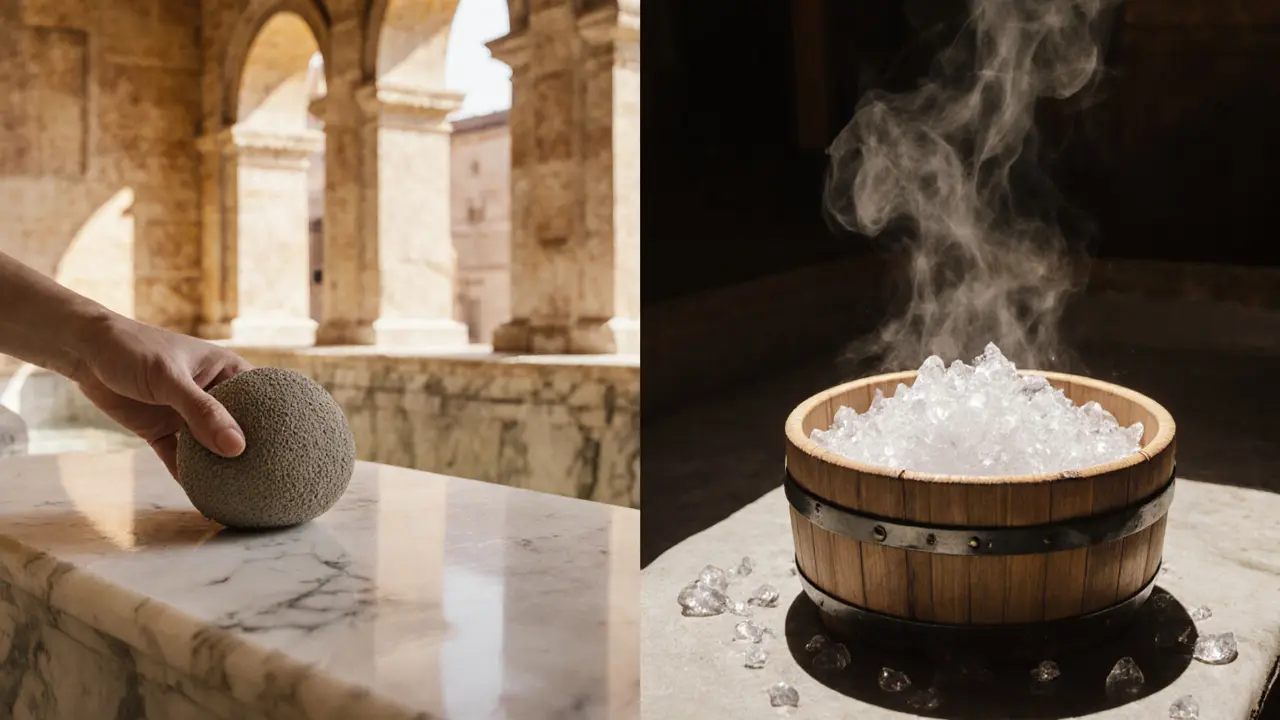Exfoliating Scrub: What It Is, Why It Matters, and How to Use It
When working with exfoliating scrub, a physical skin treatment that uses granular particles to remove dead cells and smooth the surface. Also known as scrub, it is a staple in both home skincare and luxury spa routines. Dry brushing, a dry, bristle‑based technique that stimulates circulation before a wet scrub often pairs with an body scrub, a similar product but formulated for the larger surface of the torso and limbs. Together they form a layered exfoliating scrub regimen that boosts skin renewal, improves texture, and preps the skin for moisturizers or spa treatments. This combination is especially popular in Dubai’s climate, where humidity and sun exposure can leave the skin looking dull.
Key Benefits and How They Connect to Your Skincare Routine
Skin exfoliation, the broader process of removing dead skin cells using physical or chemical methods is the umbrella term that includes exfoliating scrubs, dry brushing, and chemical peels. By sloughing off the outer layer, exfoliation triggers faster cell turnover, which in turn enhances the absorption of serums and moisturizers. In a typical spa treatment, therapists may start with a gentle dry brush session to increase blood flow, then apply a tailored body scrub that contains ingredients like sugar, salt, or jojoba beads. The scrub’s texture (granule size) and active ingredients (e.g., vitamin E, aloe) are attributes that determine its suitability for different skin types. For oily skin, a finer salt scrub can help unclog pores, while dry or sensitive skin benefits from a sugar‑based, softer formula.
Choosing the right product involves considering three main attributes: particle size, ingredient base, and frequency of use. Large, rough particles may be too abrasive for delicate areas, leading to micro‑tears, whereas micro‑beads (now banned in many regions) offered a smoother feel but posed environmental concerns. Today, natural exfoliants like crushed walnut shells or oat flour provide a balance of effectiveness and eco‑friendliness. Frequency is another critical factor; most dermatologists recommend 2‑3 times per week for normal skin, but those with sensitive or dry skin should limit use to once weekly. After exfoliation, the skin’s barrier is temporarily more permeable, making post‑scrub aftercare—such as applying a hydrating cream or a light serum—essential to lock in moisture and prevent irritation.
In Dubai’s upscale spa scene, an spa treatment, a curated service that may combine exfoliation, massage, and aromatherapy often incorporates both dry brushing and a customized exfoliating scrub as a first step. This integrated approach not only cleanses the skin but also prepares the muscles for a deeper massage, creating a holistic wellness experience. For travelers looking to maximize their spa visit, ask the therapist about the scrub’s ingredient list, especially if you have allergies or prefer vegan options. Understanding how each element—dry brushing, body scrub, and overall skin exfoliation—interacts will help you pick the right routine, enjoy smoother skin, and get the most out of your Dubai spa day. Below you’ll find a collection of articles that dive deeper into specific massage types, budgeting for spa days, and other wellness tips to complement your exfoliating scrub journey.
Discover the best body scrubber for your skin. This guide explains types, benefits, safety tips, and step‑by‑step usage so you can choose the perfect exfoliator.

